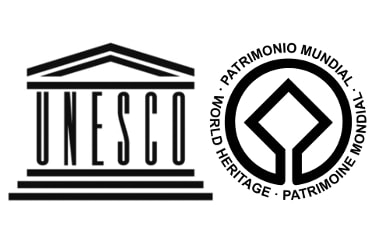
The World Heritage Committee, during its 41st session in Krakow from 2 July to 12 July 2017, added various cultural and natural sites in UNESCO’s World Heritage List.
The 41st session of the World Heritage Committee was chaired by Jacek Purchla, Founder and Director of the International Cultural Centre in Krakow.
The City of Yazd is located in the middle of the Iranian plateau, close to the Spice and Silk Roads.
It bears living testimony to the use of limited resources for survival in the desert.
Water is supplied to the city through a qanat system developed to draw underground water.
1. Sacred Island of Okinoshima and Associated Sites in the Munakata (Japan):Located 60 km off the western coast of Kyushu, the island of Okinoshima bans women and mandates male visitors to strip naked before going ashore.
This men only island encompasses some archaeological sites that have been preserved on the Island and are virtually intact and provide a chronological record of how the rituals performed there changed from the 4th to the 9th centuries CE.
Venetian Works of Defence between the 16th and 17th Centuries (Croatia, Italy, Montenegro): This site contains 15 components of defence works in Italy, Croatia and Montenegro.
It spans more than 1000 kilometres between the Lombard region of Italy and the eastern Adriatic Coast.
2. Kujataa Greenland (Denmark):Kujataa is a sub-arctic farming landscape located in the southern region of Greenland.
It bears witness to the cultural histories of the Norse hunters-gatherers, Norse farmers, Inuit hunters and Inuit farming communities.
The landscape represents the earliest introduction of farming to the Arctic, and the Norse expansion of settlement beyond Europe.
Taputapuatea (France): Taputapuatea on Raiatea Island of France is at the centre of the Polynesian Triangle, a vast portion of the Pacific Ocean dotted with islands.
It is the last part of the globe to be settled by humans.
3. Caves and Ice Age Art in the Swabian Jura (Germany): Modern humans first arrived in Europe around 43000 years ago during the last ice age.
One of the areas where they took up residence was the Swabian Jura in southern Germany. Excavated from the 1860s, six caves have revealed items dating from 43000 to 33000 years ago.
Among them are carved figurines of animals, musical instruments and items of personal adornment.
Tarnowskie Gory Lead-Silver-Zinc Mine (Poland): Located in Upper Silesia in southern Poland, the site includes the entire underground mine with adits, shafts, galleries and water management system.
Mostly, the site is situated underground while the surface mining topography features the remains of the 19th century steam water pumping station.
4. Aphrodisias (Turkey):Located in southwestern Turkey, the site consists of two components: the archaeological site of Aphrodisias and the marble quarries northeast of the city.
The temple of Aphrodite dates from the 3rd century BCE and the city was built one century later.
5. Kulangsu: A historic international settlement (China): Kulangsu is a tiny island located nearby the Chiu-lung River and faces the Chinese city of Xiamen.
There is a mixture of different architectural styles including Traditional Southern Fujian Style, Western Classical Revival Style and Veranda Colonial Style.
The most exceptional evidence of the fusion of various stylistic influences is a new architectural movement, the Amoy Deco Style, which is an amalgamation of the Modernist style of the early 20th century and Art Deco.
Mbanza Kongo (Angola): The town of Mbanza Kongo was the political and spiritual capital of the Kingdom of Kongo.
The historical area grew around the royal residence, the customary court and the holy tree, as well as the royal funeral places.
Mbanza Kongo illustrates the profound changes caused by the introduction of Christianity and the arrival of the Portuguese into Central Africa.
6. Asmara: a Modernist City of Africa (Eritrea): Located at over 2000 metres above sea level, Asmara developed as a military outpost for the Italian colonial power from 1890s onwards.
Today, Asmara is an exceptional example of early modernist urbanism at the beginning of the 20th century and its application in an African context.
7. Khomani Cultural Landscape (South Africa):Khomani Cultural Landscape is located at the border with Botswana and Namibia in the northern part of South Africa.
It bears testimony to the way of life that prevailed in the region and shaped the site over thousands of years.
8. Qinghai Hoh Xil (China): Qinghai Hoh Xil is the largest and highest plateau in the world. This extensive area of alpine mountains and steppe systems is situated more than 4500 m above sea level.
The property shelters the complete migratory route of the Tibetan antelope, one of the endangered mammals that are endemic to the plateau.
9. Landscapes Of Dauria (Mongolia / Russian Federation): Shared between Mongolia and the Russian Federation, this site is an outstanding example of the Daurian Steppe eco-region, which extends from eastern Mongolia into Russian Siberia and north-eastern China.
10. Los Alerces National Park (Argentina): The Los Alerces National park is located in the Andes of northern Patagonia and has a western boundary, which coincide with the Chilean border.
The site is important for the protection of some of the last pieces of Patagonian Forest in an almost unspoiled state and is the habitat for a number of threatened species of flora and fauna.